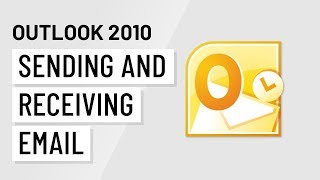Mastering Communication: A Comprehensive Guide to Sending and Receiving Email in Outlook 2010

Microsoft Outlook 2010, a stalwart in the realm of email clients, continues to be a preferred choice for individuals and organizations alike, offering a robust platform for efficient communication. In this extensive guide, we embark on a journey through the intricacies of sending and receiving emails in Outlook 2010, exploring the myriad features, customization options, and best practices that empower users to streamline their communication workflows.
I. Introduction to Microsoft Outlook 2010: A Unified Communication Hub
A. Overview of Outlook 2010
Microsoft Outlook 2010 stands as a feature-rich email client, providing users with a comprehensive suite of tools for managing emails, contacts, calendars, and tasks. It seamlessly integrates with Microsoft Exchange Server, making it an ideal choice for both personal and professional communication needs.
II. Setting Up Email Accounts in Outlook 2010
A. Adding Email Accounts
- Open Outlook 2010:
- Launch the Outlook application on your computer.
- Access Account Settings:
- Navigate to the “File” tab.
- Click on “Account Settings” and select “Account Settings” again.
- Add New Account:
- In the Email tab, click “New” to add a new email account.
- Follow the prompts to enter your name, email address, password, and other relevant details.
- Click “Next” and then “Finish” to complete the setup.
- Verifying Settings:
- Ensure that incoming and outgoing server settings are accurate by checking with your email service provider.
III. Composing and Sending Emails in Outlook 2010
A. Creating a New Email
- Open Outlook:
- Launch Outlook 2010 on your computer.
- Navigate to the Home Tab:
- Click on the “Home” tab to access the email-related functions.
- Click on “New Email”:
- In the “New” group, click on “New Email” to open a new email composition window.
- Enter Recipient’s Email Address:
- In the “To” field, enter the recipient’s email address.
- Compose Email:
- Type your email content in the body of the email, adding a subject, attachments, and formatting as needed.
- Send Email:
- Click on “Send” to dispatch your email to the recipient.
IV. Receiving and Managing Emails in Outlook 2010
A. Receiving Emails
- Automatic Send/Receive:
- Outlook 2010 is configured to automatically check for new emails at regular intervals. However, you can manually initiate a send/receive by clicking on “Send/Receive” in the Home tab.
- Unread Email Indicator:
- Unread emails are bolded in the inbox, making it easy to identify new messages.
B. Organizing Emails
- Folders and Categories:
- Use folders and categories to organize emails. Create folders for specific projects, clients, or topics, and assign categories to easily classify and retrieve emails.
- Flagging Emails:
- Flag important emails for follow-up by right-clicking on the email and selecting “Follow Up.”
V. Advanced Email Features in Outlook 2010
A. Email Signatures
- Creating Signatures:
- Customize your email signature by going to “File” > “Options” > “Mail” > “Signatures.” You can add text, images, and links to your signature.
B. Out-of-Office Replies
- Setting Up Out-of-Office Replies:
- If you’re away, set up automatic out-of-office replies under “File” > “Info” > “Automatic Replies.”
C. Email Encryption
- Encrypting Emails:
- Outlook 2010 supports email encryption. You can secure your emails by going to “Options” while composing an email and selecting “Encrypt.”
D. Rules and Filters
- Creating Rules:
- Organize your inbox automatically by setting up rules. Go to the “Home” tab, click on “Rules,” and choose “Manage Rules & Alerts” to create custom rules.
VI. Troubleshooting and Tips for Efficient Email Management
A. Dealing with Email Overload
- Use Folders Wisely:
- Create folders for different types of emails to keep your inbox organized.
- Regularly Delete Unnecessary Emails:
- Delete irrelevant emails to prevent clutter.
- Use Categories and Flags:
- Categorize and flag emails for easy retrieval and follow-up.
B. Handling Attachments
- Managing Large Attachments:
- Avoid sending large attachments, and use cloud storage services for sharing big files.
- Scanning for Viruses:
- Always scan email attachments for viruses before opening them.
VII. Outlook 2010 Best Practices for Enhanced Productivity
A. Keyboard Shortcuts
- Learn Keyboard Shortcuts:
- Familiarize yourself with Outlook keyboard shortcuts for quicker navigation and task execution.
B. Regular Backups
- Back Up Outlook Data:
- Regularly back up your Outlook data to prevent data loss.
C. Keep Software Updated
- Update Outlook:
- Ensure that you are using the latest version of Outlook with all available updates.
VIII. Conclusion: Outlook 2010 – Your Gateway to Effective Communication
Microsoft Outlook 2010 remains a powerhouse in the world of email communication, offering a suite of features that cater to both basic and advanced user needs. By mastering the art of sending and receiving emails in Outlook 2010, users can harness the full potential of this versatile email client, streamlining communication and enhancing productivity.
This comprehensive guide serves as a roadmap for users, from setting up email accounts to utilizing advanced features and implementing best practices. Whether you’re a seasoned professional or a novice user, leveraging the capabilities of Outlook 2010 can significantly enhance your email management experience.
In the ever-evolving landscape of digital communication, Microsoft Outlook 2010 stands as a reliable companion, facilitating seamless and efficient interactions. By incorporating the tips, tricks, and best practices outlined in this guide, users can navigate the complexities of email communication with confidence, making Outlook 2010 a central hub for their personal and professional correspondence.







